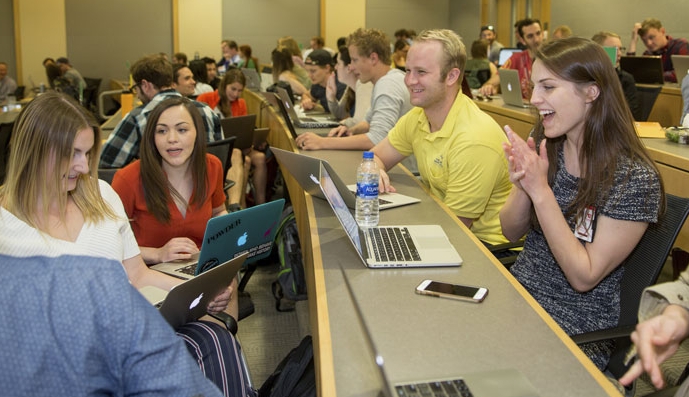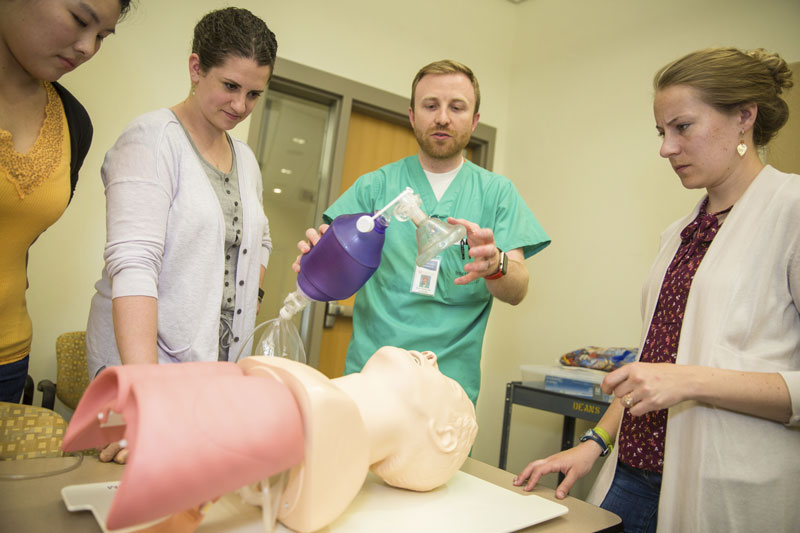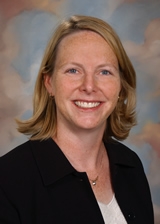Voices of U of U Health
Strategy Refresh: Evaluating Exceptional Education
In conjunction with a university-wide effort, University of Utah Health has launched a six-month Strategy Refresh Initiative to establish our path forward during the next five years, 2020 – 2025. This is one of a series of GOOD NOTES blogs about our mission to elevate the health system and university as models for the nation.
Four months ago, Senior Vice President Michael Good created the position of Associate Vice President for Health Sciences Education. This is a unique position, in academic health care, and the first of its kind. I was honored to be named to the position.
To focus on strategy for teaching and training tomorrow’s health care professionals, we started by determining what our education program does exceptionally well. Capitalizing and building on our strengths, we can foster even greater educational excellence across our system. The big goal moving forward is to further distinguish our academic system, a center of health care advancement that prepares learners with exceptional thinking, exceptional skills, and a deep desire to improve the lives of others.

Already, our schools and colleges provide exceptional educational opportunities, including highly individualized experiences. Learners are exposed to pioneering efforts in health care. Student innovation is highly encouraged. We are a national leader in applying science to personalized medicine to improve health care delivery – and learners directly experience being on the cutting edge.
Align Planning
A top priority now is aligning the planning in our six academic units (Colleges of Health, Nursing and Pharmacy, Eccles Health Sciences Library, Schools of Dentistry and Medicine). Alignment has the advantage of sharing resources and minimizing redundancy. It will mean more informed planning and increased data driven decision-making. Each school and college will continue its own planning, based on specific needs. We’ll also establish a system for planning from the ground up. We’ll get input from constituents, from the people doing the teaching and the students who are learning. For a thriving education system, it is important to bring essential groups together to form the best culture for learning. When planning involves every level of our education system, people at every level are invested in the system’s success.
Environmental Changes
When it comes to where we are as an academic institution, there are changes ahead. We need to be prepared. Population in the Utah and the Mountain West is booming. Besides affecting our clinical strategy, the population boom makes a difference for U of U Health’s education and training. For all its history, since its founding in 1905, our School of Medicine has been the only institution in the state for medical education. Two years ago, a for-profit, osteopathic school opened and another is scheduled to open in 2021. There are other places across the state for students to pursue degrees in nursing, dentistry, and allied health fields. To meet increasing statewide demands, the University of Utah Physician Assistant program has an extension program in St. George. The University of Utah Health Asia Campus offers master’s degrees in Public Health and Biomedical Informatics.
 The increase in health science schools across the state has led to increased demands on our community faculty members. We rely on health care providers to volunteer as faculty members. These are the skilled practitioners who supervise learners in clinical settings allowing practical experience with patients. The volunteer physicians teach University of Utah medical students, nurse practitioner students, physician assistant students, and medical residents and fellows.
The increase in health science schools across the state has led to increased demands on our community faculty members. We rely on health care providers to volunteer as faculty members. These are the skilled practitioners who supervise learners in clinical settings allowing practical experience with patients. The volunteer physicians teach University of Utah medical students, nurse practitioner students, physician assistant students, and medical residents and fellows.
Performance Measurement
We want to lay a foundation for measuring our educational performance. There is no metric to determine national distinction in health science education. It’s not as simple as citing U.S. News & World Report rankings or other college rankings. We need to come up with our own metrics and measurements.
An easy measurement, long established for schools of medicine and dentistry, is the percentage of students who pass their boards, or licensing examinations. Beyond theses tests of knowledge and skills, though, we need to measure impact. Is our faculty truly having an impact on our learners? Impacting skills and the learners’ professional outlook? Are members of the education faculty able to progress in their academic career? Are they enhancing their teaching skills while feeling valued? Will our learners' educational experience mean they will successfully move forward both personally and professionally, so that they can impact communities where they live and work?
I am excited to work with you to define, develop, and promote a culture of excellence in education.
